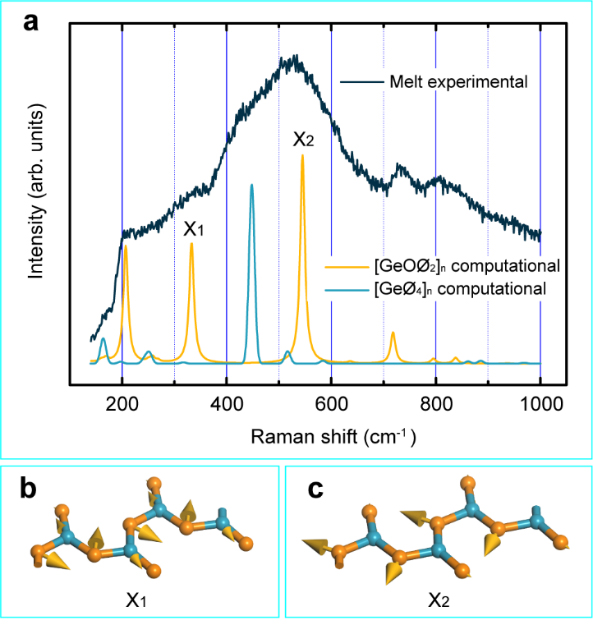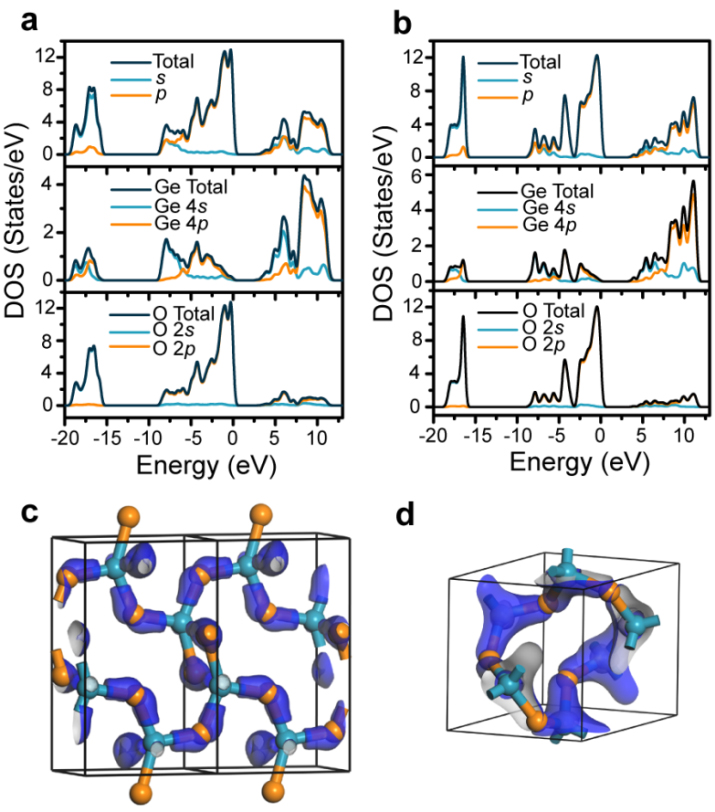
According to a research recently published in Nature Communications, threefold coordinated germanium was found in a GeO2 melt for the first time, which may settle down the long-standing debate on the GeO2 melt structure.
This research was conducted by a group of researchers led by Prof. WAN Songming from the Hefei Institutes of Physical Science (HFIPS) of the Chinese Academy of Sciences (CAS), in collaboration with researchers from the State Key Laboratory of Advanced Special Steel located in Shanghai University.
Crystal and glass, two main states of solid, are both formed from high-temperature melts. The melt structures relate to the macro-properties of melts, the micro-processes of crystal growth, the formation of defects in crystals, and the structures and properties of glasses. However, the knowledge about melt structures is very limited so far due to the lack of suitable analytical tools.
"Threefold coordinated germanium is a special form of germanium bonding to oxygen," said Prof. WAN, "and this unique arrangement of atoms and bonds hasn't been proved in the GeO2 melt before."
In this research, scientists used high-temperature Raman spectroscopy and DFT computation to investigate the structural origins of two mysterious peaks, which are located at 340 and 520 cm-1 in the Raman spectrum of a GeO2 melt.
The electronic structures of the GeO2 melt indicate that not only stable Ge–O bonds but also fluxional Ge–O bonds exist in the GeO2 melt, which can be used to interpret the fluidity, as well as the viscosity, of the GeO2 melt at the molecular level.
"That’s how we found threefold coordinated germanium in the GeO2 melt," said WAN, "and this will change the traditional viewpoint of the germanium oxide structure."
This discovery provides a new insight into the structures of germanate melts, which is helpful for better understanding the formation, defect structures, and properties of germanate crystals/glasses. In addition, as an analog of SiO2, the knowledge of the GeO2 melt structure also has an important implication in geological research.

Figure 1. Raman spectra of the GeO2 melt and vibrational modes of the two mysterious Raman peaks. (Image by ZHENG Guimei)

Figure 2. Electronic structures of the [GeOØ2]n chain and the [GeØ4]n network (two building units of the GeO2 melt). (Image by ZHENG Guimei)